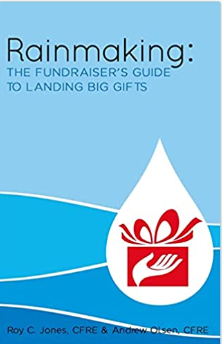By Gail Perry www.GailPerry.com
Everybody’s losing their donors left and right. Are you holding on to your donors? Or are they drifting away never to be seen again?
Across the board in the fundraising business, the probability that a donor will make a second gift to an organization is only 50%. To make matters worse, the probability that a donor might make five consecutive gifts is only 10-15%.
Use these strategies to make your donors feel really, really special. Then they’ll say “yes” when you ask for their support again.
1. Create a personal “insider’s briefing” for donors.
- Make them feel special by inviting them for personal briefings.
- Encourage a casual atmosphere and an exchange of questions.
- Have a facilitator who can help bring out questions from the group and encourage interaction.
2. Hold private tours for donors.
- What if you asked every single donor to come over for a personal or group tour of your organization?
- What a wonderful way to thank donors and show them personally the good work you’ve accomplished via their donations.
3. Host a social or series of socials for donors.
- And this does not mean a “donor appreciation event” (who would want to come to that?)
- Instead, hold a porch party or a cook-out for your donors. (that sounds like fun!)
- Be sure you have a fun, not dreary event. Turn it into a party!
4. Send a newsletter just for donors.
- Send something that has lots of pictures and stories.
- It should be plastered with information on the results you are achieving with their investments.
- Its tone should be friendly and informal.
5. Give them special treatment at your events.
- Give donors special seating.
- Give them a special star on their name tag, or special access to something.
- Find a way to have them feel really special at your event. At the least, recognize them.
- Try holding a private reception for your bigger donors immediately before a big event.
6. Create special communications just for donors.
- You could call it the monthly donor update, or “Good News for our Friends.”
- Try a special personalized e-briefing: “your gift at work.”
7. Survey your donors.
- Ask them what they think of the communications you send them.
- Ask them what news they’d like to hear from you.
- Ask them their opinion of your newsletter.
- Check out Tom Ahern’s article We don’t care what our donors think of us. He refers to a recent fundraising conference where 150 attendees were asked if they conducted donor satisfaction surveys. Not a hand went up. He then talks about how nonprofits are doing such a poor job holding on to donors.
8. Call your donors to say thank you.
- Thank you phone calls are a sure-fire way to keep donors happy.
- Here are the statistics that Penelope Burk found when she tested the impact of board members making thank you phone calls to donors:
Board members called to thank donors within 24 hours of receiving the gift. The next time the donors were solicited, those called gave 39% more than the other donors who did not get called. After 14 months, those called were giving 42% more than the other donors who did not receive phone calls.
9. Invite them to “State of Your Organization” update conference calls.
- Check out how the Atlanta Union Mission communicated with its donors and managed to budget a 10% increase in gifts because of its excellent donor retention.
10. Invite them to participate in an activity.
- I joined the Sierra Club and three weeks later was invited to a potluck dinner of the Triangle chapter.
- Three weeks after that I was invited to the “clean sweep” of our region’s waterways. I was impressed that they moved so quickly to get me involved.
11. Create a special “donors only” web site for them.
- Let them make comments on the site and tell their own stories.
- Check out how Care International cut attrition of their face-to-face acquired donors by 50%. They created an online reporting approach back to each donor that spoke to them in a personalized fashion, sharing – in specific terms – what their contributions accomplished.
What have I missed? Please leave a comment and share the way YOUR organization slathers attention on its donors.


